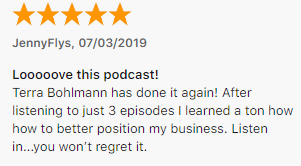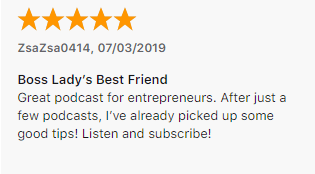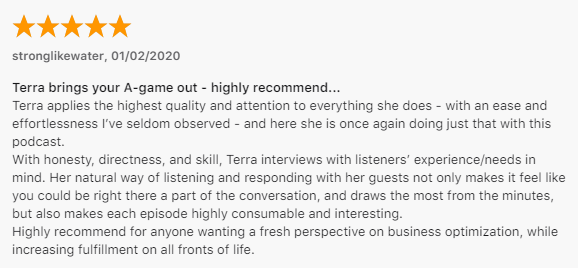The Fast-Track Woman Podcast: Episode #10
Brand Positioning with Lisa Hoffman
Click the Play Button + Listen Below.
Meet Podcast Guest, Lisa Hoffman.
As a copywriter and designer, Lisa helps service-based entrepreneurs look, sound, and sell like the high-value experts they are so they attract better clients, make more money, and have a bigger impact with their work.
She helps clients define strong brand positioning (or what she likes to call their brand’s Star Power), write the words they need for all their marketing materials (aka their brand messaging), and from that develop beautiful, high-converting websites. As a result, her clients become incredibly clear and confident in their communications making it easy to connect with ideal prospects and have highly effective sales conversations.

About this Podcast Episode.

In this week’s podcast episode, Terra interviews Lisa Hoffman, copywriter and designer at Paraphrase Communications. Lisa provides insight on why it’s important to have brand positioning before spending money on marketing. They discuss the importance of having a sales page that becomes your number one salesperson. Lisa dishes on what exactly should be on your sales page, both in terms of words and imagery.
Want to know if you should have a long sales page or a short sales page? Tune in and find out.
Resources, Tools, and Links Mentioned in this Episode.
- To learn more about Lisa, visit www.paraphrasecomm.com.
- Download Lisa's freebie on brand positioning and messaging HERE.
- Tune in and watch Lisa's weekly Facebook Live episodes to learn more about copywriting, mindset, design and websites.
- Apply for your complimentary Fast-Track Session with Terra HERE.
Read and Download the Transcript for this Episode.
Interact More with the Podcast.
Great Reviews Make My Heart Sing.



Much appreciation from one happy Podcast Host!
Are you subscribed to my podcast?
If you’re not, you should subscribe so you never miss an episode.
And...I invite you to take it a step further + leave a 5-Star review.
To give a review, click the image and select “Ratings and Reviews” and “Write a Review” on iTunes.
Share a takeaway what you learned and let other women entrepreneurs know why they should listen to the podcast.
Reviews help other women entrepreneurs find my podcast and I truly enjoy reading them.
It takes a community of like-minded women to help other like-minded women succeed.
(Oh, by the way, I love to do shout-outs on future episodes and you just may hear your name!)



